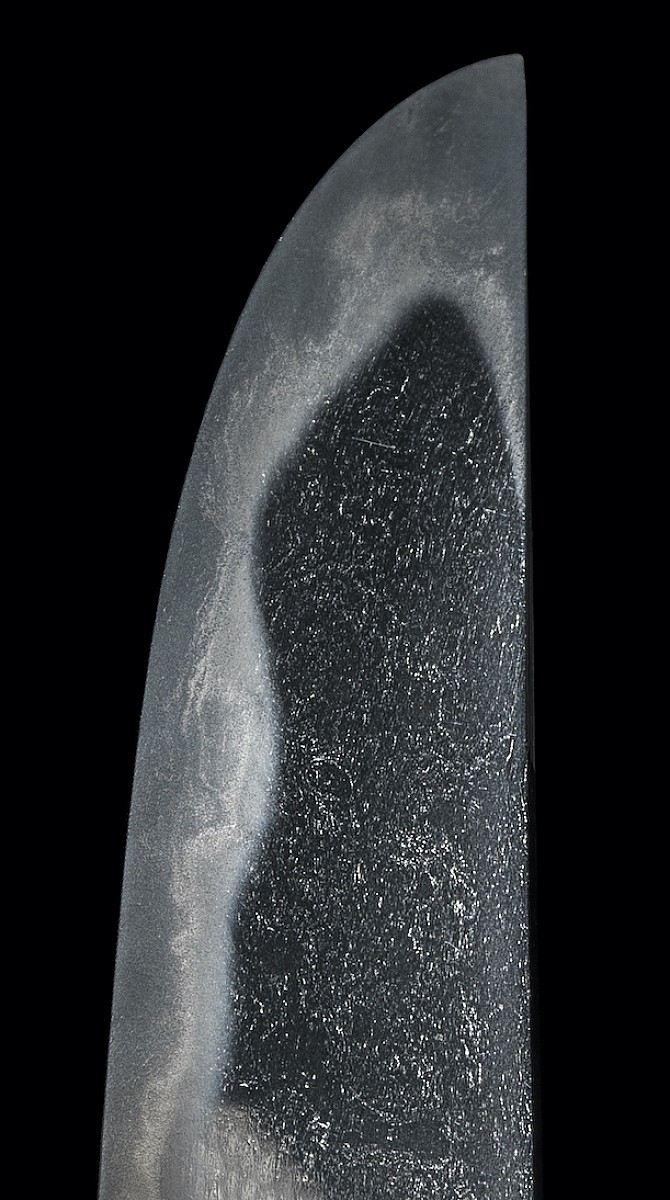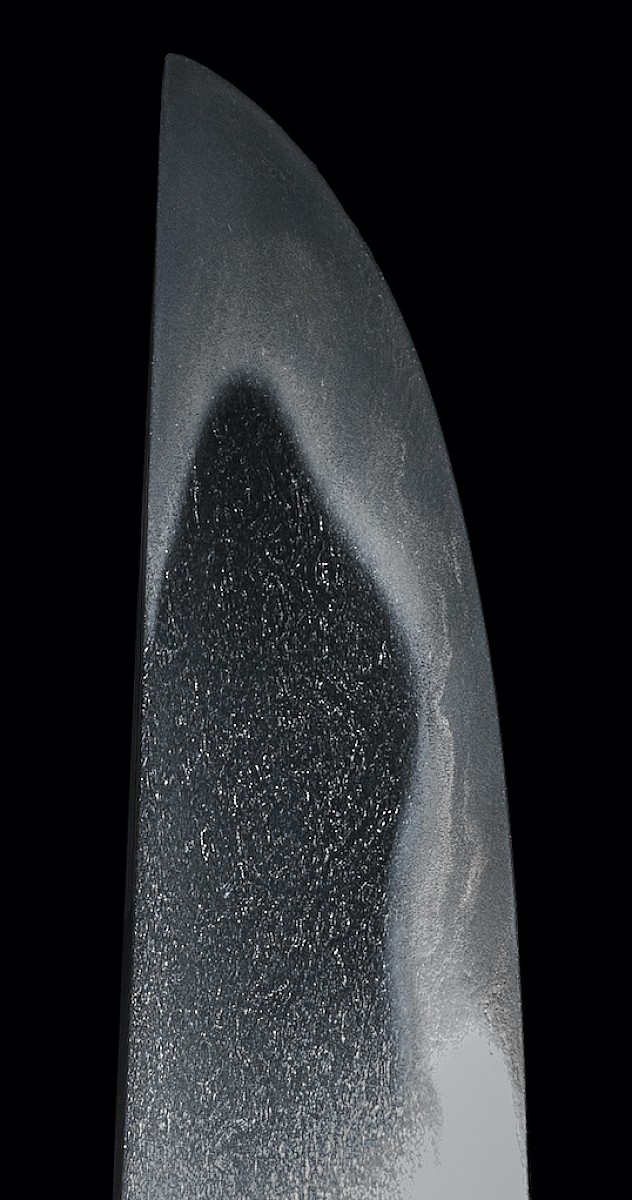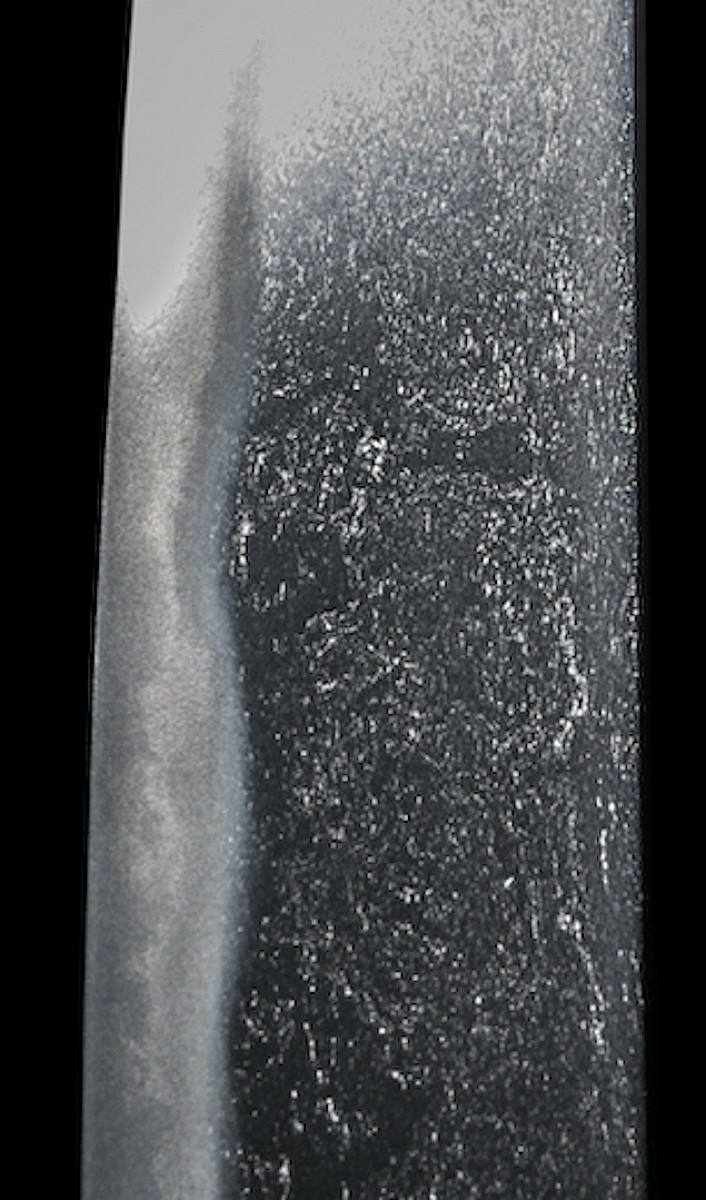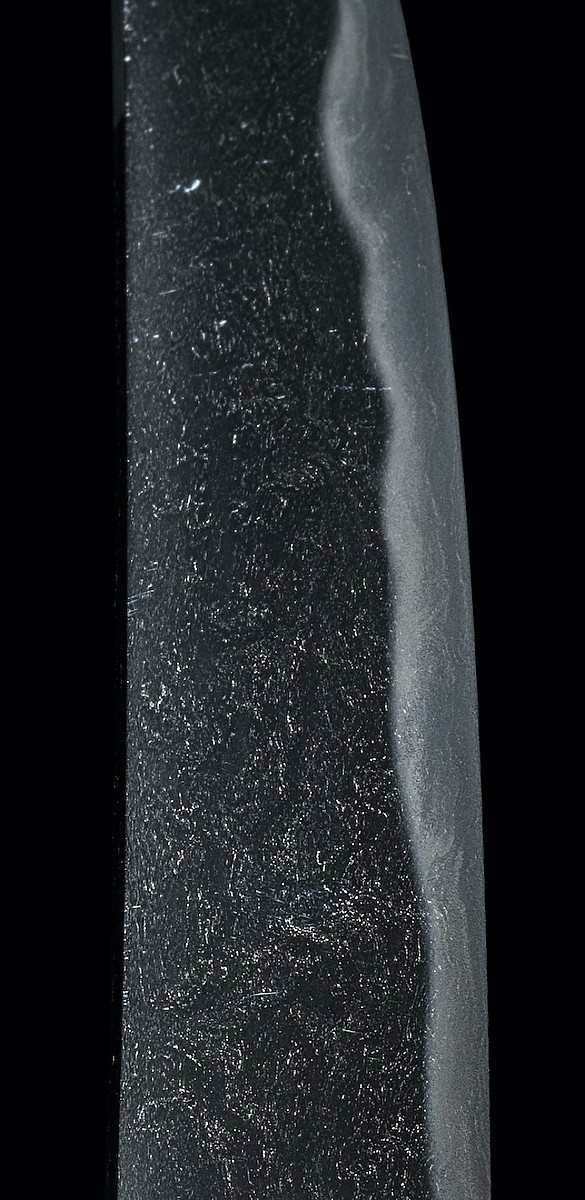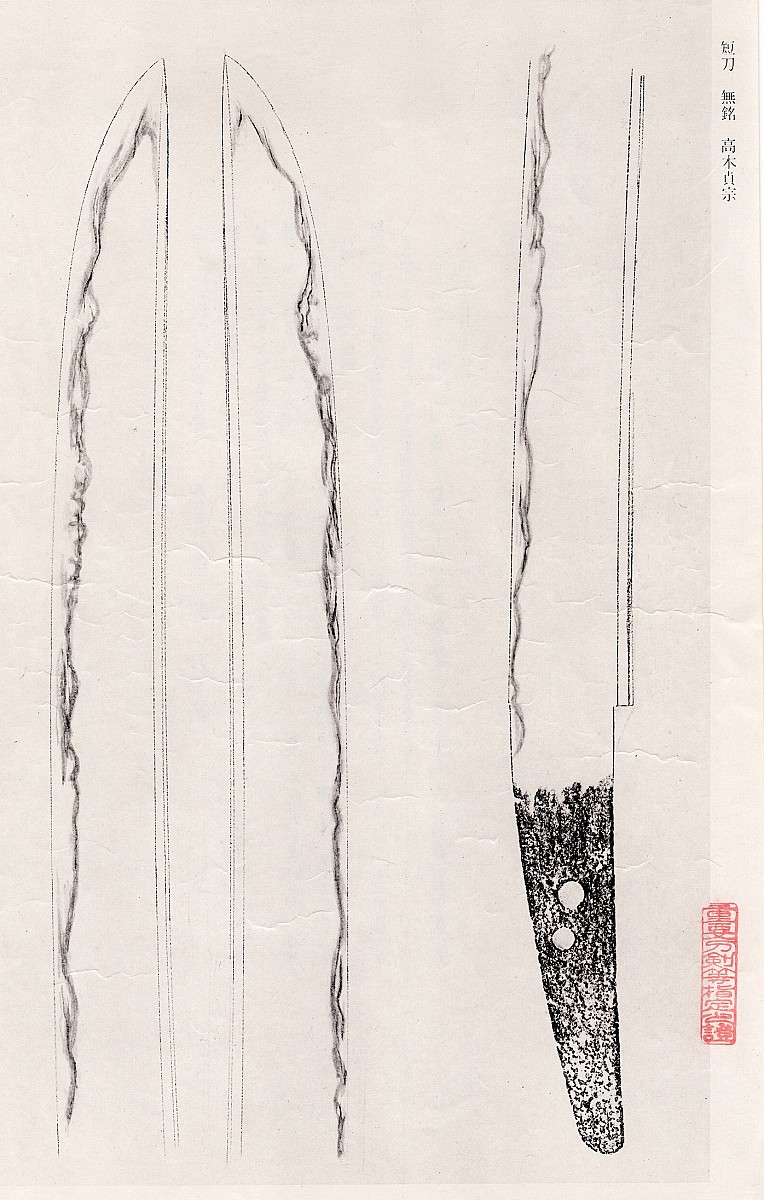Takagi Sadamune (高木貞宗), Ōan (応安, 1368-1375), Ōmi – „Gōshū Takagi-jū Sadamune“ (江州高木住貞宗), the currently most accepted theory says that Takagi Sadamune was a student of Sōshū Sadamune, at least there are some signed blades extant which show a very similar workmanship but are somewhat inferior in quality of the jigane, transmissions say that he was either a smith from Takagi of Ōmi province who went to Kamakura to study there under Sadamune or that Sōshū Sadamune went later in his career to Takagi and worked there too, but most experts agree that they were different smiths, that means Takagi Sadamune was as mentioned either a student of the successor and second generation of Sōshū Sadamune, it is also said that he signed in early years with „Hiromitsu“ (弘光). Tokaido (東海道), saijō-saku.
Jūyō Tōken Takagi Sadamune Tantō: nagasa: 27.72 сm; sori: 0.3 сm; motohaba: 2.55 сm; kasane: 0.48 сm; nakago nagasa: 10.5 сm; unsigned, attributed to Takagi Sadamune, with traces of shu-mei “Masamune” removed, due to a change in attribution, tōrokushō No. 16004, dated 11.12.1953. Provenance: Maeda Ikuhiro (前田育宏) and Darcy Brockbank (Montreal, Canada; the owner of the www.nihonto.ca website).
Designated as Jūyō Tōken at the 15th jūyō-shinsa held on the 10th of February 1967.
Publications: NBTHK Jūyō Tōken Nado Zufu, Volume 15, Dai Tōken Ichi catalogue, 2010, p. 98.
Figure 1. Dai Tōken Ichi Catalogue.
A relatively wide blade with a beautiful sugata, a finely faceted itame-hada with a ji-nie and added chikei. The hamon is a mix of ko-nie-deki notare and gunome-midare with scattered ko-ashi and yō and small kinsuji and sunagashi.
The nagasa is about 27 cm long, the same as that of the famous tantō forged by Sadamune, meitō “Taikogane Sadamune.” That is actually quite atypical for Sōshū Sadamune, although a nagasa of that size is considered extremely large for a tantō. For Sadamune’s tantō, the most typical nagasa size is about 30 cm, with a very slight curve of the blade.
When it comes to its smithing style and general appearance, this Takagi Sadamune tantō is very similar to the blades made during the late Kamakura period. Study of the nakago reveals traces of a shu-mei applied by an evaluator on the tang with a special red lacquer. The traces of the shu-mei and the surviving old registration documents allow us to include that this tantō was initially attributed to Masamune, as this attribution was stated in the relevant shu-mei. That is not at all surprising, because the sword has an excellent kitae and a graceful hamon based on nie. The sword demonstrates a number of features and signs of being made by the Sagami School at the highest level, and it serves as another example of how easily some of Sadamune’s works could be attributed to Masamune and vice versa. The piece embodies many contradictions. On one hand, it has a hamon pattern typical for Sadamune (ko-notare with gunome); on the other hand, a weaker, less dense and distinct jigane is characteristic of Takagi Sadamune. Furthermore, attributing that sword to Sadamune is hindered by its lack of a horimono (no swords without a horimono can be attributed to Sadamune).
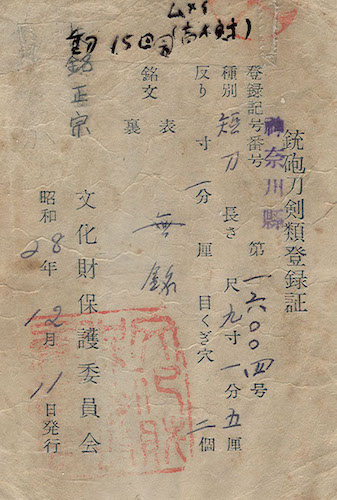
The old license (called tōrokushō) for the sword is dated 1953. It is a very old and significant dating, because licensing and cataloguing swords from daimyō collections began in 1951. In the top left corner, in the first column it reads: “shu-mei Masamune.” Supposedly, the number of that license was 16 004, which is quite an early registration. By comparison, now more than 2 million swords have been registered. The place of registration was Kanagawa Prefecture—one of the wealthiest regions of Japan. That prefecture was where the majority of early tōrokushō were issued. Later, in 1967, the sword was submitted for Jūyō certification. Based on the shinsa results, the sword was classified as Jūyō; however, the NBTHK did not confirm the initial evaluation of the sword as Masamune’s work and classified it as made by Takagi Sadamune.As a result, to make the sword conform to the final attribution, the shu-mei was removed from the tang. Traces of the inscription remained, however, most likely because of strict requirements regarding the delicacy of the process, necessitating that the shu-mei be removed without damaging the nakago.
However, the NBTHK’s conclusion in attributing this tantō to Takagi Sadamune gives very high marks for the quality of the blade and the craftsmanship of its maker. Actually, it places the sword “one level below Sadamune,” and attributing a blade to Sadamune is one of the highest honors that can be bestowed on a sword and a smith! This Jūyō was issued before 1971 and is one of the so-called old Jūyō, highly prized among collectors. Therefore, regardless of who has forged this blade, Masamune’s son or his grandson, it serves as an excellent example of the Sagami School and a lesson taught by the great master via his magnificent blade.
(excerpt from Chapter 6, pp. 132-159, of the Japanese Swords: Sōshū-den Masterpieces )
Original content Copyright © 2019 Dmitry Pechalov

